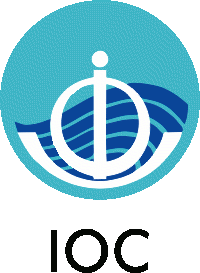Introdução
ISABP is operated as an regional action group of the DBCP, and endeavours to establish and maintain an oceanographic and meterological data network over the South Atlantic ocean.
Should you be interested in more detail on the different drifters types or the activities of other regional action groups, go to the home page of the Data Buoy Cooperation Panel.
Relevância
Drifting buoys have been deployed in the South Atlantic Ocean for the past 20 years. The deployments have, however, always been done without any coordination between different participants. It was thus the need for a broader participation in South Atlantic buoy deployments, as well as a more coordinated effort in the South Atlantic ocean.
The first programme meeting took place in Buenos Aires (Argentina) in December 1993. This was followed by the acceptance by the Data Buoy Cooperation Panel (DBCP) of the ISABP as an regional action group. The second programme meeting of the ISABP was help in Pretoria, South Africa, in October 1995. The ISABP III meeting took place in Niterói city, Brazil in October 1996.
Instituições
| Link | Instituição | País |
|---|
| SHN | Servicio de Higrografía Naval | Argentina |
Met Office | The Met Office | United Kingdom | AOML | Atlantic Oceanographic and Meteorological Laboratory | United States | NDBC | National Data Buoy Center | United States | METEONA | The Meteorological Service | Namibia | DHN | Diretoria de Hidrografia e Navegação | Brasil | SAWS | South African Weather Bureau | South Africa | SFRI | Sea Fisheries Research Institute | South Africa | AWI | Alfred Weneger Institute | Germany | MEDS | Marine Environmental Data Center | Canada | Argos | Service Argos/ Argos Inc. | France/USA |
How to be Part of ISABP?
Participation in the ISABP, and thereby contributing to expanding or maintaining the data network in the Atlantic Ocean, need not be subject to a large budget outlay.
There are ways to contribute to this programme and, as you will see, some of these proposals require the utilization of structures which many national meteorological services or institutes already have at their disposal.
Contribution of drifters:
This is one of the capital components of the ISABP. The type of drifter mostly deployed by the participants is the Surface Velocity Programme Barometer (SVP-B) buoy or the Low Cost Drifter (LCD). Most agencies supply drifters for deployment to other institutions which are more conveniently located to accomplish deployments in certain areas.
Logistical support for the deployment of drifters:
The making available of deployment opportunities is a resource that is not currently being fully utilized. Frequently, research vessels, navy vessels, and supply vessels criss-cross areas in the Atlantic Ocean where buoy deployments are required. The potential deployment opportunities are not known to programme participants, and are thus not utilized.
Experience has shown that many navy vessels, commercial vessels, and most research vessels are willing to deploy drifters at predetermined locations along their route. By liaising with the authorities in your country, you are bound to hear of many deployment opportunities. Should there be research vessels operating from the shores of your country, these are often willing to do drifter deployments during their voyages. Navy vessels doing patrols along the shores of your country are ideal for such deployments. This is especially true along the west coast of Africa, the south-east coast of South America and the Caribbean.
A contribution could also involve supplying storage space for drifter before they are taken by these ships of opportunity for deployments.
The making available of ARGOS PTT for the relay of data from buoys:
Some agencies might be willing to supply the drifter at no cost, should the transmission cost of the drifter be paid for by an interested participant. Obviously the data need to be make available on the GTS for the benefit of all participants. This drifter could then provide data from an area that is of more specific importance to your institution.
Quality control services:
By checking the quality of data being transmitted by buoys onto the GTS and notifying the Buoy-QC bulleting board, you would be ensuring that poor quality data from drifters is rapidly removed from the GTS.
Installation of fixed stations:
Several fixed stations have already been installed on Atlantic Ocean islands. Additional stations in the region could benefit the programme.
Informações técnicas
Os dados são recebidos via satélites através do sistema Argos. O programa Argos é administrado conjuntamente pela agência americana, NOAA, e francesa, CNES.
Este sistema está montado a bordo dos satélites da série NOAA que operam em órbita polar.
Os dados são descarregados em Toulouse na França e são disponibilizados no sistema GTS. Alternativamente estes dados chegam ao CHM através do INMET.
Os mesmos dados têm sido também captados diretamente no Brasil através dos satélites SCD 1 e 2 e CBERS e são disponibilizados para o CHM, via FTP, pela DSA do CPTEC/INPE.
Faça o download do PDF aqui.




